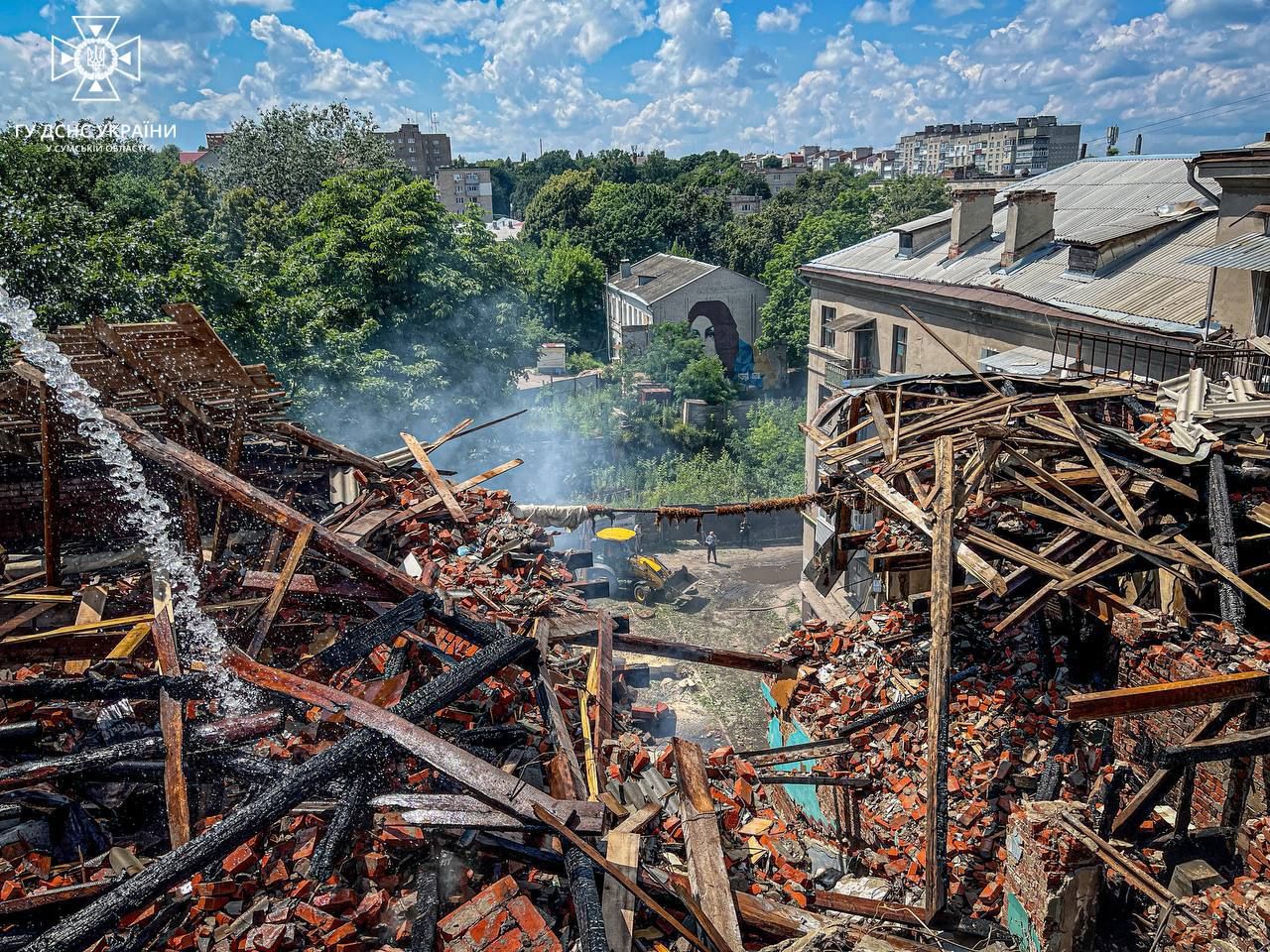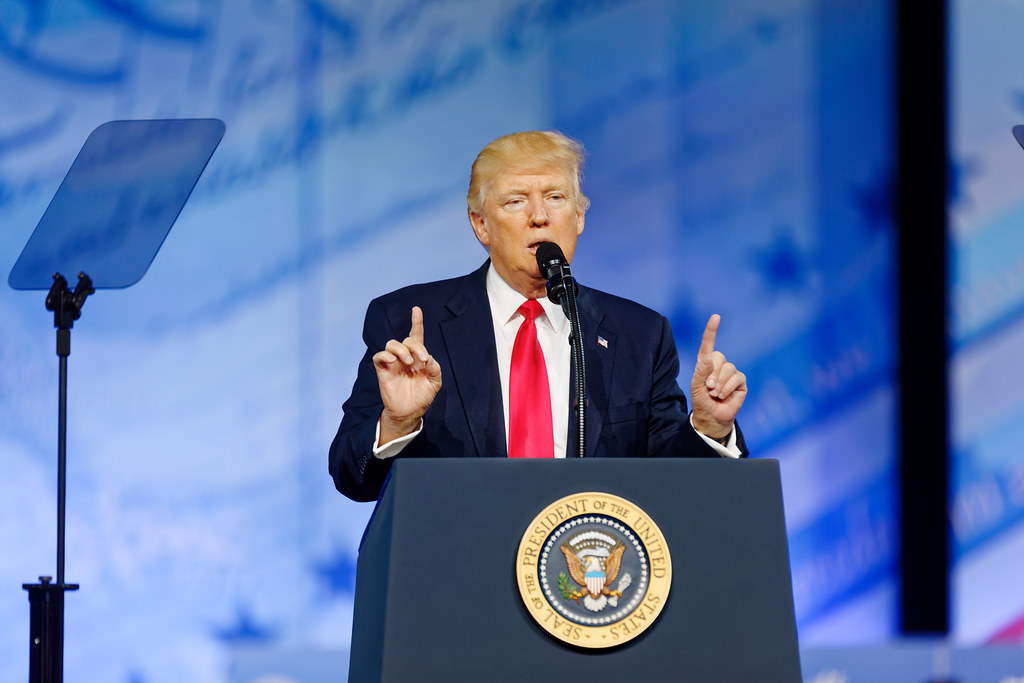
Donald J. Trump has, over the decades, carved an indelible mark on the landscape of American business, media, and politics, embodying a unique trajectory from a real estate mogul to the 45th and 47th President of the United States. His life story, replete with ambitious ventures, public controversies, and significant legal challenges, reflects a relentless pursuit of prominence that has profoundly influenced the nation’s discourse and direction.
Born into a wealthy New York City family, Trump’s early career was defined by an aggressive expansion of his family’s real estate enterprise into Manhattan’s glittering skyline. He then transitioned into a formidable media personality, leveraging television to cultivate an image of a shrewd billionaire, an image that would ultimately become a powerful asset in his unconventional rise to the highest office.
This article delves into the various facets of Donald Trump’s complex journey, from his foundational years and entrepreneurial pursuits to his transformative media presence and the initial phases of his political ascendance. We will meticulously explore the key milestones and defining characteristics that have shaped one of the most scrutinized public figures of our time, setting the stage for a deeper understanding of his enduring impact.
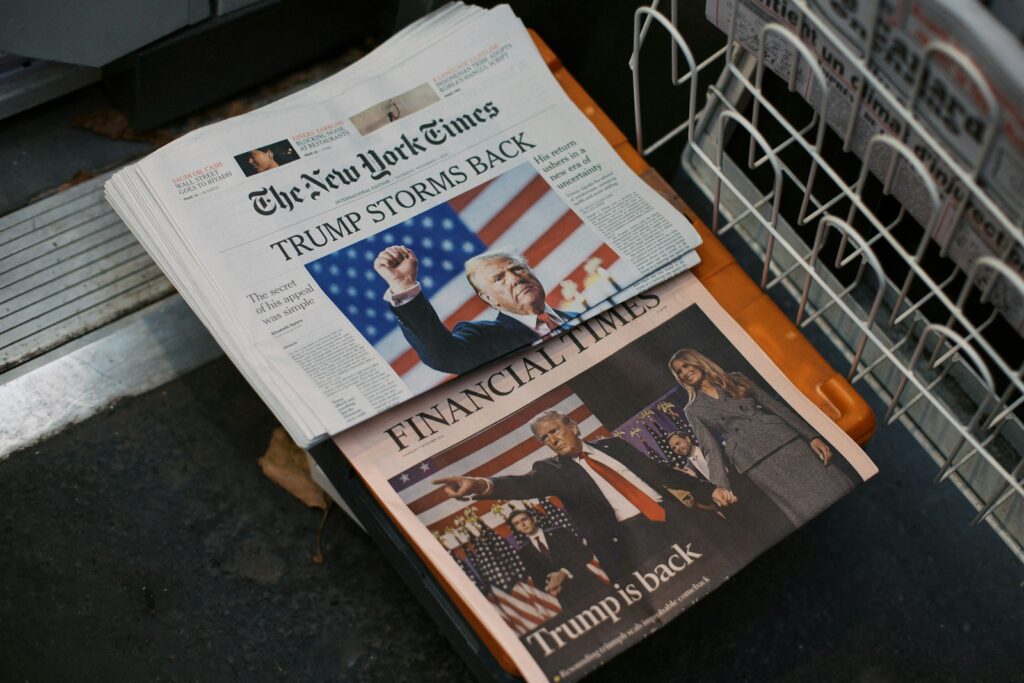
1. **Formative Years and Business Roots**Donald John Trump, born on June 14, 1946, in Queens, New York City, was the fourth child of Fred Trump and Mary Anne MacLeod Trump. His lineage, of German and Scottish descent, established him within a family already engaged in real estate. Growing up in a 23-room mansion in Jamaica Estates, Queens, Trump was exposed to the world of business from an early age, with his father paying his children each about $20,000 a year, an amount equivalent to $265,000 in 2024. This early financial endowment ensured Trump was a millionaire in inflation-adjusted dollars by the tender age of eight.
His early education included attendance at the private Kew-Forest School through seventh grade, where he was noted as a difficult child who already displayed an interest in his father’s business endeavors. To address his challenging nature, his father enrolled him in New York Military Academy, a private boarding school. Here, students were encouraged to participate in sports and imbibed the “imperative of winning,” a principle that would seemingly guide Trump’s future undertakings. His grades improved to a B average during his high school years at the academy.
After considering a career in show business, Trump instead chose a path closer to home, enrolling at Fordham University in 1964. During his first year, he participated in the Reserve Officers’ Training Corps program but dropped it in his second. He also briefly played football and was a “mediocre squash and tennis player,” though he later discovered golf through Fordham friends. He transferred to the Wharton School of the University of Pennsylvania for his junior year, often commuting to his father’s office on weekends, and graduated in May 1968 with a Bachelor of Science in economics, setting the formal groundwork for his business career. Notably, he was exempted from the Vietnam War draft due to a claim of bone spurs in his heels, and despite five years in military school, he “had no interest in going to war.” Throughout his formative years, his father and the family’s pastor, Norman Vincent Peale, served as significant mentors, with his father repeatedly telling him he was “a king” and to be “a killer,” while Peale preached self-confidence as a pathway to prosperity.
Read more about: Beyond the Limelight: 12 Former Child Stars Who Traded Hollywood for Totally Normal, Awesome Careers!

2. **Manhattan Real Estate Ascent**Following his graduation in 1968, Trump joined Trump Management, his father’s real estate company, which specialized in managing middle-class apartment complexes across Queens, Staten Island, and Brooklyn. For approximately five years, his primary responsibilities included collecting rent and overseeing repairs, providing him with direct, hands-on experience in property management. However, Trump, captivated by the “glamor and riches” of Manhattan, expressed a strong desire to expand the family business into the borough, a move his father, content with the outer boroughs, initially resisted.
In 1971, Trump relocated to Manhattan, commuting to his father’s office while planning the business’s eventual shift. That same year, his father appointed himself chairman and named Donald president, placing him at the helm of 48 private corporations and 15 family partnerships. It was during this period that Trump began consolidating the various corporate names under the umbrella of “The Trump Organization,” marking a significant step in establishing his own identity and brand within the real estate world, distinct from his father’s traditional operations.
Trump first garnered widespread public attention in 1978 with his family’s inaugural Manhattan project: the ambitious renovation of the dilapidated Commodore Hotel, strategically located adjacent to Grand Central Terminal. This venture was significantly aided by a $400 million city property tax abatement, which his father helped arrange, alongside a $70 million bank construction loan jointly guaranteed by his father and Hyatt. The hotel, reimagined as the Grand Hyatt Hotel, successfully reopened in 1980. Concurrently, Trump secured the rights to develop Trump Tower, a landmark mixed-use skyscraper in Midtown Manhattan, which would eventually house the headquarters of the Trump Corporation, his PAC, and serve as his primary residence until 2019, cementing his presence on the city’s iconic skyline.
Read more about: Unpacking the Legacy: 12 Pivotal Chapters in the Illustrious Life of George Washington
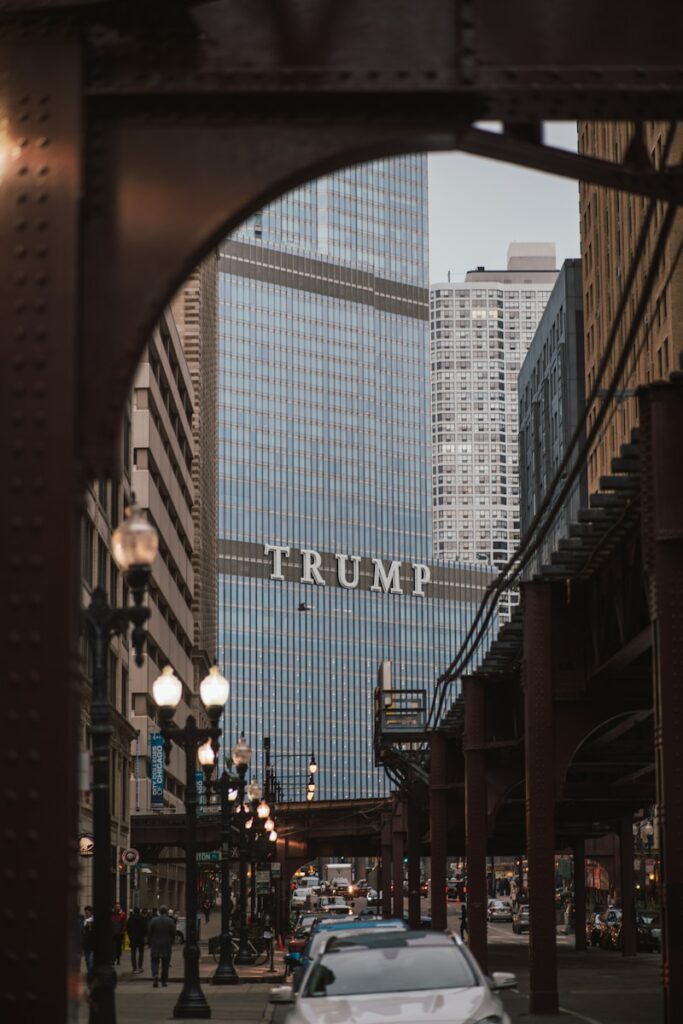
3. **Atlantic City Ventures and Business Bankruptcies**Donald Trump’s ambition to expand beyond residential real estate led him to the burgeoning casino market of Atlantic City, New Jersey, in the 1980s. In 1984, he opened Harrah’s at Trump Plaza, a hotel and casino, developed with financing and management assistance from the Holiday Corporation. However, this initial venture proved unprofitable, prompting Trump to pay Holiday $70 million in May 1986 to assume sole control, a testament to his willingness to take full ownership of struggling assets.
His Atlantic City portfolio expanded in 1985 with the acquisition of the unopened Atlantic City Hilton Hotel, which he subsequently rebranded as Trump’s Castle. By 1988, Trump added a third major venue, the Trump Taj Mahal, a project financed with $675 million in junk bonds and completed at a total cost of $1.1 billion, opening its doors in April 1990. These lavish investments were characteristic of Trump’s high-stakes approach to business, but they also introduced significant financial vulnerabilities.
The expansion into the highly competitive casino industry proved precarious. The Trump Taj Mahal, a symbol of his grand aspirations, filed for Chapter 11 bankruptcy protection in 1991, leading to a restructuring agreement where Trump relinquished half of his initial stake and personally guaranteed future performance to alleviate his $900 million personal debt. Both Harrah’s at Trump Plaza and Trump’s Castle followed suit, filing for Chapter 11 bankruptcy protection in 1992. These filings, along with the sale of other assets like the Trump Shuttle airline and his megayacht, the Trump Princess, underscored a period of significant financial distress and reorganization that reshaped his business empire.
Read more about: Donald J. Trump: A Deep Dive into the Divisive Legacy of a President, Businessman, and Media Mogul
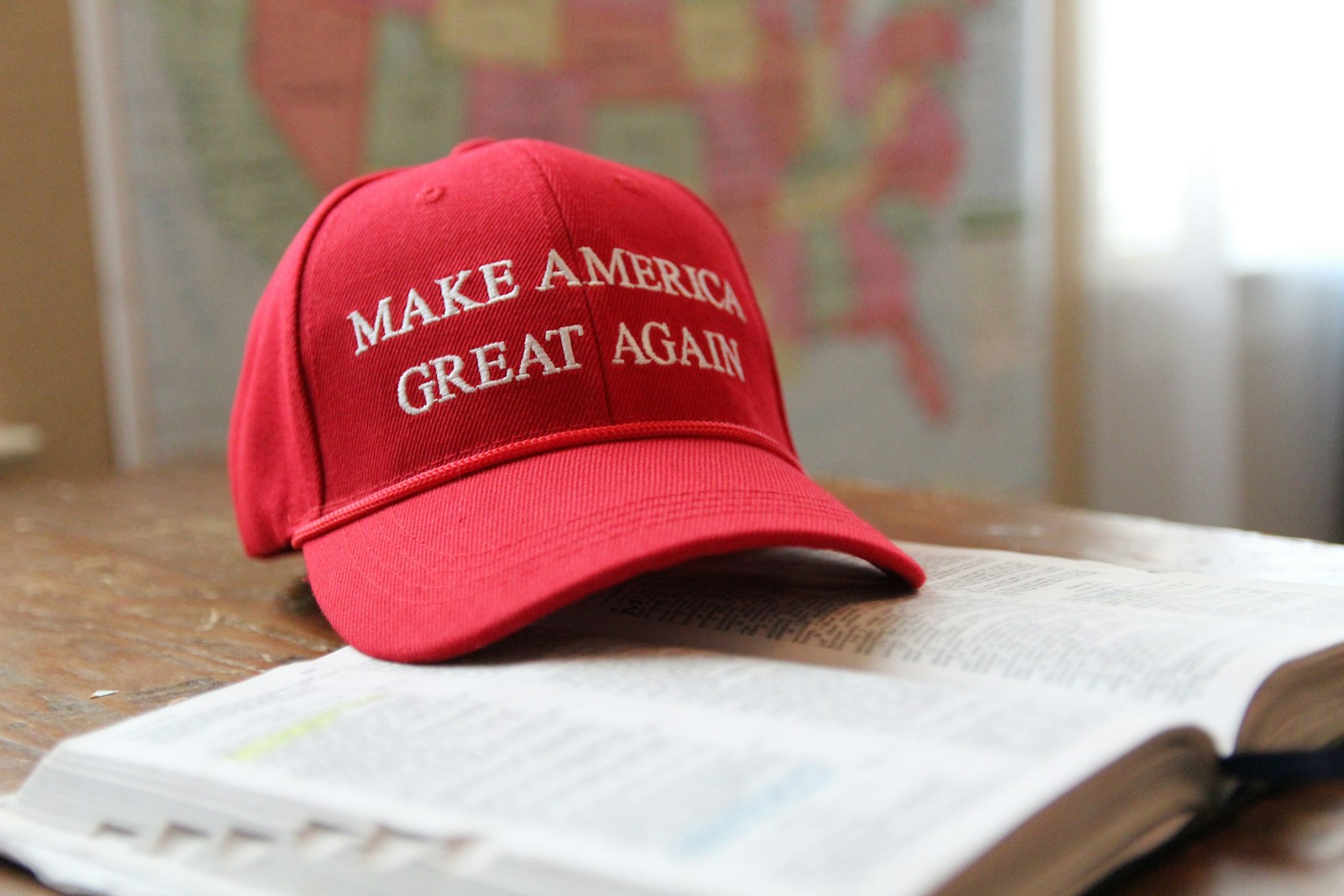
4. **Branding and Licensing Ventures**A defining characteristic of Donald Trump’s business approach has been his astute understanding and aggressive utilization of his personal brand. The Trump Organization frequently engaged in licensing the “Trump name” for a diverse array of consumer products and services. This strategy extended across various sectors, encompassing foodstuffs, apparel, educational learning courses, and home furnishings, effectively transforming his surname into a recognizable, albeit sometimes polarizing, commodity.
This extensive licensing operation proved to be a significant revenue stream for his companies. More than 50 licensing or management deals, according to reports, generated at least $59 million for his various enterprises, demonstrating the considerable value he placed on his name as an asset. The strategy involved lending the Trump name to residential property developments around the world, though notably, 40 of these planned developments were ultimately never built, indicating the aspirational nature of some of these ventures.
By 2018, however, the landscape had shifted, with only two consumer goods companies reportedly continuing to license his name, reflecting changes in market perception and possibly his growing political profile. Nevertheless, the practice of licensing the Trump name exemplified a unique business model centered on personal branding and marketing, allowing him to monetize his public image and association with luxury and success across a wide spectrum of commercial endeavors, even when direct ownership or operational involvement was minimal.
Read more about: The Enduring Financial Empire: Michael Jordan’s Astounding Annual Endorsement Earnings in Retirement
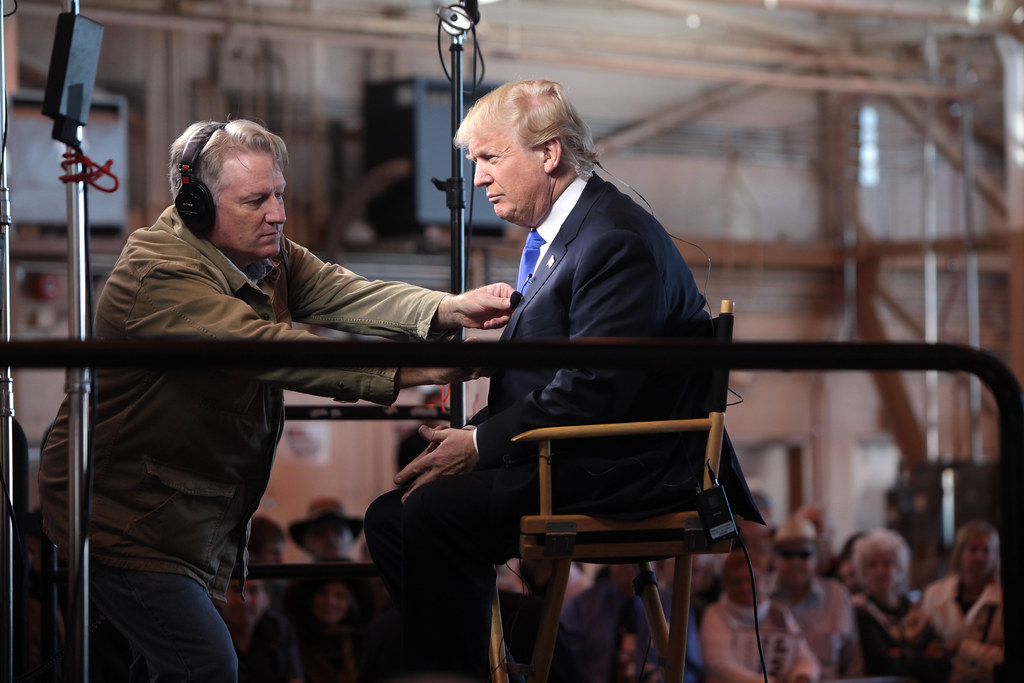
5. **Early Side Ventures and Media Engagements (Pre-Apprentice)**Beyond his core real estate and casino operations, Donald Trump ventured into a variety of other businesses and media engagements, cultivating a broader public persona. In 1970, an early, albeit unsuccessful, foray into show business saw him invest $70,000 of his father’s wealth to be credited as coproducer of a Broadway comedy, a venture that resulted in a financial loss. His interest in sports ownership manifested through low-ball bids for major league baseball teams before he purchased the New Jersey Generals of the United States Football League in 1983 for approximately $6 million.
The USFL, however, folded after the 1985 season. This outcome was largely attributed to Trump’s contentious efforts to shift to a fall schedule, which would have put it in direct competition with the National Football League, and his subsequent antitrust suit aiming to force a merger with the NFL. Trump also maintained a significant presence in the boxing world, with his Plaza Hotel hosting several notable matches at the Atlantic City Convention Hall, further cementing his image as a showman.
His ambition extended to creating an American equivalent of prestigious European cycling races, leading him to lend his name to the Tour de Trump cycling stage race in 1989 and 1990. Financially, an intriguing strategy involved acquiring significant blocks of shares in various public companies between 1986 and 1988, often suggesting an intention to take over, only to sell his shares for a profit. This practice led some observers to label his actions as “greenmail,” though The New York Times reported that while he initially made millions, he “lost most, if not all, of those gains after investors stopped taking his takeover talk seriously.”
Further expanding his ventures, Trump acquired the Eastern Air Lines Shuttle in 1988, financing the $380 million purchase with loans from a syndicate of 22 banks. Renamed Trump Shuttle, it operated until 1992, when he defaulted on his loans in 1991, leading to ownership transferring to the banks. These enterprises, while varied, demonstrated a consistent pattern of high-stakes investments and bold branding.
In 1996, Trump expanded his media and entertainment portfolio by purchasing the Miss Universe pageants, which included Miss USA and Miss Teen USA. Disagreements with CBS over scheduling prompted him to move both pageants to NBC in 2002, showcasing his willingness to leverage his assets for broader exposure. His work as a producer for Miss Universe was recognized with a star on the Hollywood Walk of Fame in 2007, marking a significant personal achievement in the entertainment industry.
However, the intersection of his media role and nascent political views became apparent when NBC and Univision ultimately dropped the pageants in June 2015, reacting to comments he made regarding Mexican immigrants. This event highlighted the early intertwining of his public persona with political controversy. Beyond pageants, Trump had cameos in numerous films and television shows from 1985 to 2001, and sporadically appeared for the professional wrestling company WWE from the late 1980s, including WrestleMania 23 in 2007. Starting in the 1990s, he was a guest 24 times on The Howard Stern Show, and hosted his own short-form talk radio program, Trumped!, from 2004 to 2008, becoming a familiar voice to listeners and a ubiquitous figure across various media platforms.
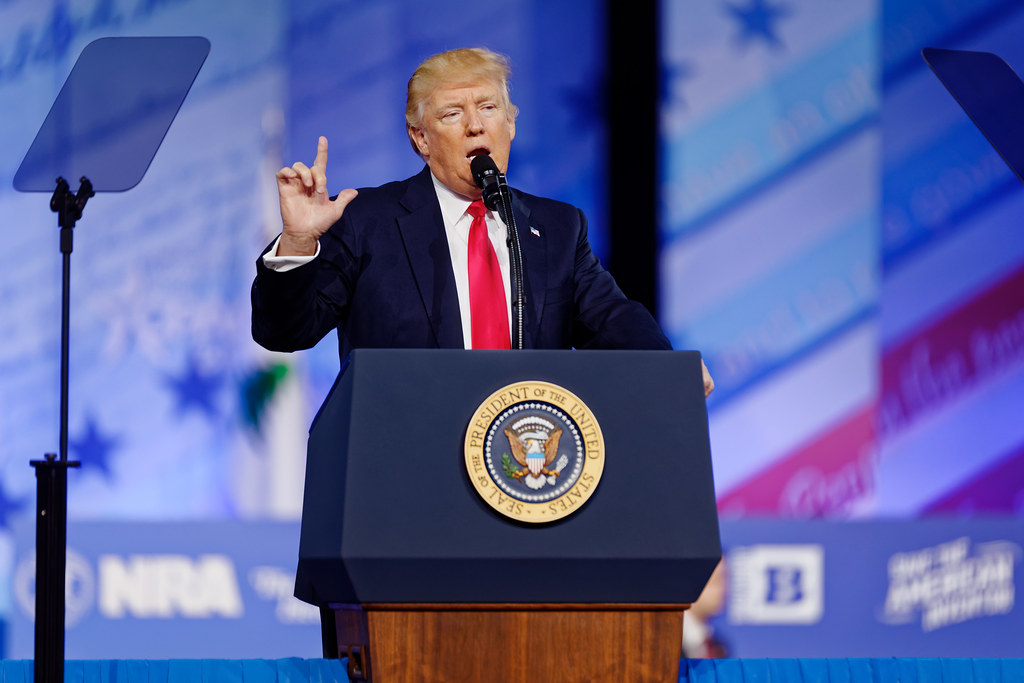
6. **The Apprentice Phenomenon**The trajectory of Donald Trump’s public image underwent a profound transformation with the advent of the reality television show *The Apprentice*. Created by producer Mark Burnett, the show, which Trump hosted from 2004 to 2015, including its variant *The Celebrity Apprentice*, propelled him into unprecedented levels of national stardom. It presented him as a “superrich chief executive” who wielded the power to “eliminate contestants with the catchphrase ‘you’re fired’,” a phrase that quickly became synonymous with his persona.
This television portrayal, as described by *The New York Times*, was a “highly flattering, highly fictionalized version” of himself. Regardless of its veracity, the program effectively remade Trump’s image for millions of viewers across the nation. It presented him as a decisive, authoritative, and successful businessman, a narrative that resonated deeply with a broad audience and cultivated a sense of admiration and intrigue around his larger-than-life character.
The financial success associated with *The Apprentice* and its related licensing agreements was substantial, reportedly earning Trump more than $400 million. Beyond the monetary gains, the show provided an invaluable platform, allowing him to bypass traditional media filters and communicate directly with the public, solidifying his celebrity status and laying crucial groundwork for future endeavors, particularly in the political realm. His carefully crafted television persona became an integral part of his public identity, preparing him for a role on an even larger stage.
Read more about: Reclaiming Your Attention: A Practical Guide to Breaking Free from the Endless Scroll of Social Media
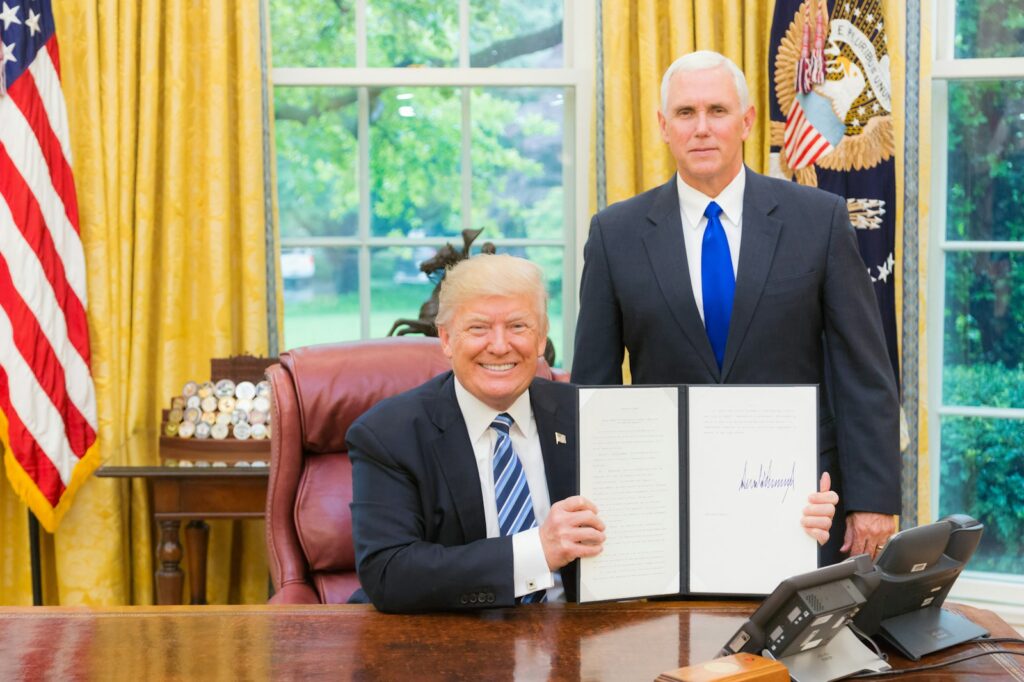
7. **Early Political Explorations**Before his successful 2016 presidential campaign, Donald Trump made several forays into the political sphere, indicating a long-standing, if inconsistent, interest in public office. His party affiliations shifted over the years: he registered as a Republican in Queens in 1969 and in Manhattan in 1987, became a member of the Independence Party (the New York state affiliate of the Reform Party) in 1999, then a Democrat in 2001, a Republican again in 2009, unaffiliated in 2011, and finally a Republican once more in 2012. These changes underscore a pragmatic approach to political identity in his early years.
One of his earliest public political statements came in 1987, when he placed full-page advertisements in major newspapers outlining his views on foreign policy and strategies to eliminate the federal budget deficit. The following year, in 1988, he approached Lee Atwater, a prominent Republican political strategist, expressing interest in being considered as George H. W. Bush’s running mate for the Republican presidential nomination. Bush reportedly found this request “strange and unbelievable,” signaling how unconventional Trump’s political aspirations were perceived at the time.
His most concrete early attempt at a presidential run was in the 2000 Reform Party presidential primaries. He was a candidate for three months before withdrawing in February 2000, ultimately deciding against a full campaign. A decade later, in 2011, Trump again contemplated challenging President Barack Obama in the 2012 election. He became a visible figure at conservative gatherings, speaking at the Conservative Political Action Conference (CPAC) in February and giving speeches in states crucial for early primaries. However, in May 2011, he announced that he would not run, leaving his political ambitions unfulfilled for the moment but keeping his name in the conversation of potential national leaders.
Read more about: Titans of Transformation: Exploring 11 Defining Moments That Steered the World Through the Turbulent 1970s

8. **The Transformative 2016 Presidential Campaign**Donald Trump’s entry into the 2016 presidential race in June 2015 dramatically reshaped American politics. Campaigning as a successful businessman and political outsider, he quickly captivated a significant portion of the electorate. His populist appeal and direct communication style, often alleging media bias, propelled him to secure the Republican nomination by May 2016.
His platform championed an ‘America First’ agenda. Key proposals included renegotiating trade agreements like NAFTA and U.S.–China relations, alongside strict immigration enforcement and a promise to build a border wall. He also advocated for energy independence, deregulation, and repealing the Affordable Care Act, signaling significant policy shifts.
Controversies, such as his comments on Mexican immigrants, marked his campaign. He notably withheld his tax returns, citing audits, a move that broke with decades of candidate precedent. Despite losing the popular vote by nearly 2.9 million to Hillary Clinton, Trump won the presidency with 304 electoral votes. His victory ushered in a deeply polarized nation and marked him as the only president without prior military or government office experience.
Read more about: The Unseen Architects: Decoding the Evolving Identity and Influence of Arab Americans
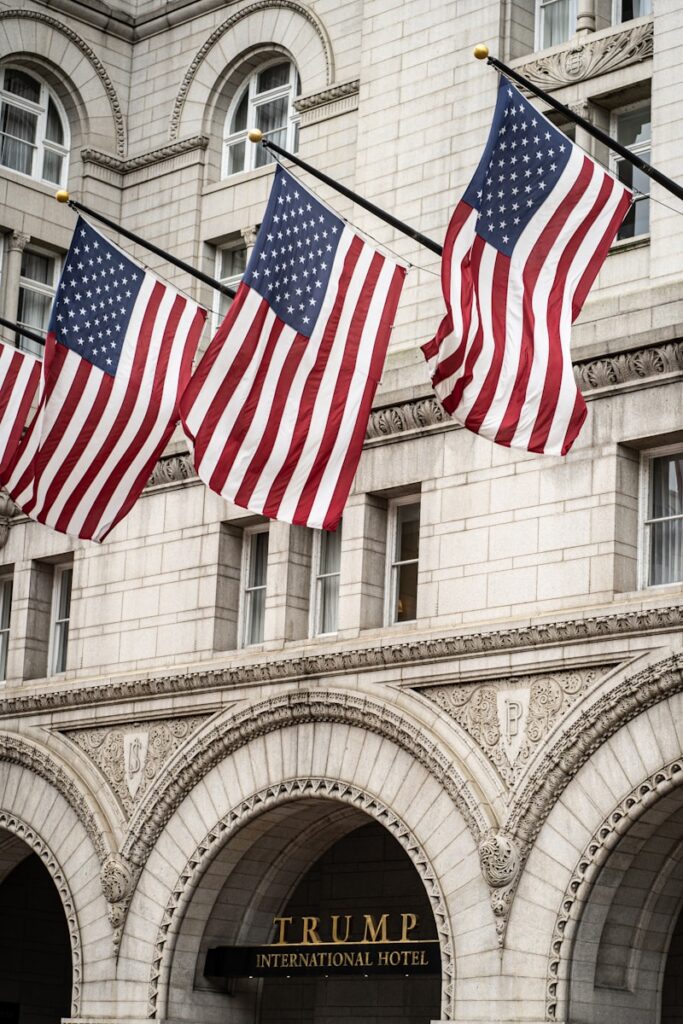
9. **First Presidency: Early Actions and Conflicts of Interest**Upon his inauguration on January 20, 2017, President Trump swiftly initiated a series of executive orders. These included starting the repeal of the Affordable Care Act, withdrawing from Trans-Pacific Partnership talks, advancing the Keystone XL and Dakota Access Pipelines, and planning for a U.S.–Mexico border wall. These actions set an immediate tone for an administration focused on rapid policy implementation.
Throughout his first term, concerns over conflicts of interest were persistent. Trump opted for a revocable trust for his businesses, allowing him to maintain awareness of and potentially profit from his holdings, departing from the traditional blind trust. His organization also pursued international expansions despite pledges against new foreign deals.
His resorts and hotels generated substantial revenue from lobbyists, foreign government officials, and allies, leading to unprecedented lawsuits alleging violations of the Domestic and Foreign Emoluments Clauses of the U.S. Constitution. He donated portions of his presidential salary until mid-2020, though reports later indicated only a fraction of estimated foreign payments had been given.
Read more about: Donald J. Trump: A Deep Dive into the Divisive Legacy of a President, Businessman, and Media Mogul

10. **First Presidency: Domestic Policy Shifts and Controversies**President Trump’s domestic agenda brought significant changes across economic, environmental, and social policies. He signed the Tax Cuts and Jobs Act of 2017, but federal budget deficits escalated, and the national debt reached a post-World War II high. A promised $1 trillion infrastructure plan did not materialize, and he became the only modern U.S. president to leave office with a smaller workforce.
Environmentally, Trump rejected climate change consensus, withdrawing the U.S. from the Paris Agreement and rolling back over 100 federal regulations. His administration expanded fossil fuel production and opened areas like the Arctic Refuge to drilling, actions that often faced legal challenges and were blocked by courts.
Race relations under Trump were frequently contentious. His ‘very fine people on both sides’ comment on the 2012 Unite the Right rally drew widespread criticism. Reports of him referring to certain nations as ‘hole countries’ were condemned as racist. His administration’s use of force against peaceful George Floyd protesters at Lafayette Square also drew widespread criticism, underscoring racial tensions during his term.
Read more about: Beyond the Hue: Unpacking the Complex Layers of Donald Trump’s Public Persona and Enduring Impact
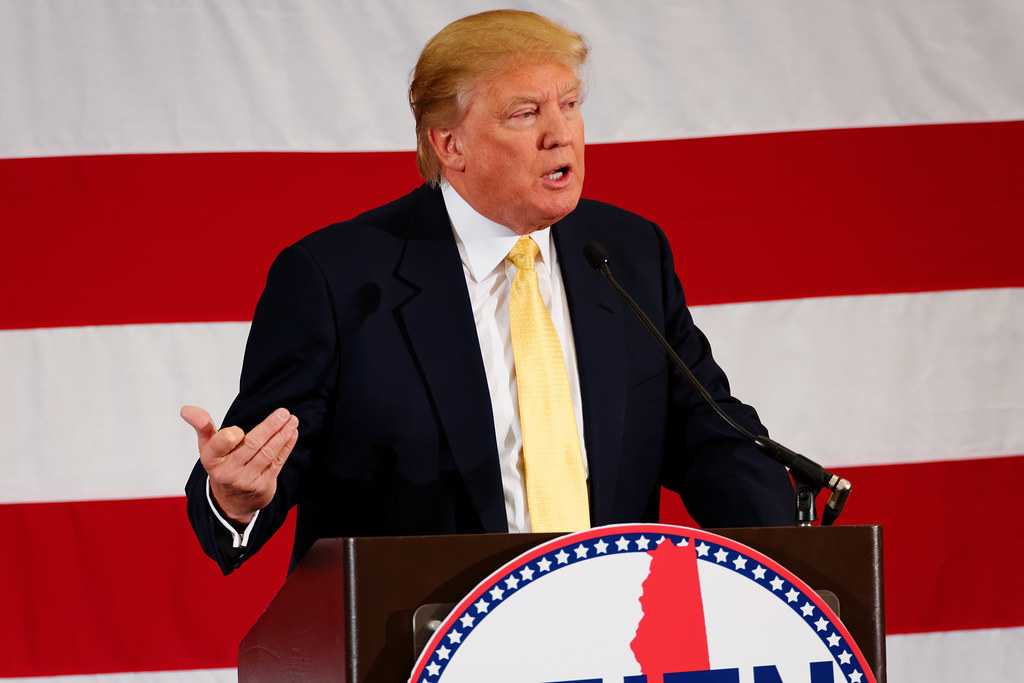
11. **First Presidency: Foreign Policy and COVID-19 Response**Donald Trump’s first presidency marked a significant shift in U.S. foreign policy, characterized by an ‘America First’ approach. He withdrew the United States from several major international agreements, including the Paris Agreement on climate, key trade accords, and the Iran nuclear program. These actions prioritized perceived national interests and bilateral relations over established multilateral commitments.
A notable initiative was the instigation of a trade war with China, imposing extensive tariffs to address perceived unfair trade practices. This strategy led to economic ramifications for both countries and introduced instability into global markets. The administration’s foreign policy was often described as transactional, focusing on immediate gains rather than long-standing alliances.
The global COVID-19 pandemic, emerging in 2020, presented an unprecedented challenge. Trump’s response involved downplaying the virus’s severity and frequently contradicting health officials, which created public confusion. While his administration signed the CARES Act, his public statements and actions, like promoting unproven treatments, drew widespread criticism from medical professionals and political opponents.
Read more about: Donald J. Trump: A Comprehensive Examination of a Singular Political and Business Trajectory
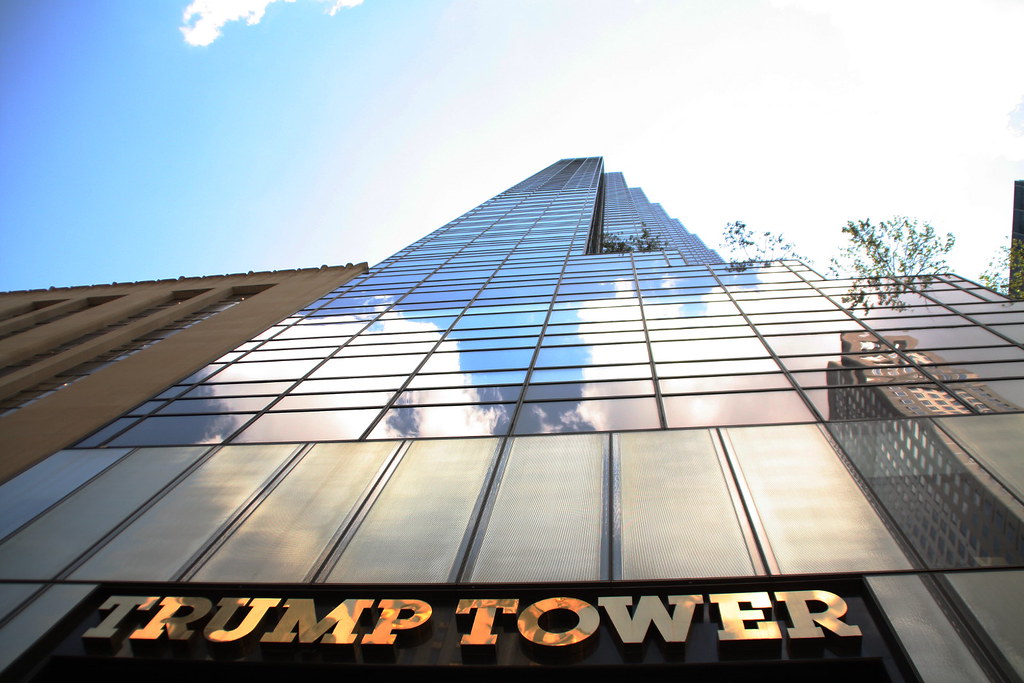
12. **Post-Presidency and Subsequent Legal Challenges**Following his 2020 election loss, Donald Trump pursued sustained efforts to overturn the results, which culminated in the January 6 Capitol attack in 2021. This event led to his second impeachment by the House; he was acquitted by the Senate, as in his 2019 impeachment. These proceedings marked unprecedented political and legal challenges for a former president.
His post-presidency has been defined by a series of legal entanglements. In 2023, he was found liable in civil cases for ual abuse, defamation, and business fraud. A landmark development occurred in 2024 when Trump was found guilty of falsifying business records, making him the first U.S. president convicted of a felony.
Despite these setbacks, Trump won the 2024 presidential election. Post-election, he received a penalty-free discharge in his falsifying business records case. Two felony indictments concerning classified documents and obstruction of the 2020 election were dismissed. A racketeering case related to the 2020 election in Georgia, however, remains pending.
Read more about: Charlie Kirk: An In-Depth Profile of the Right-Wing Activist and Trump Ally Who Died at 31
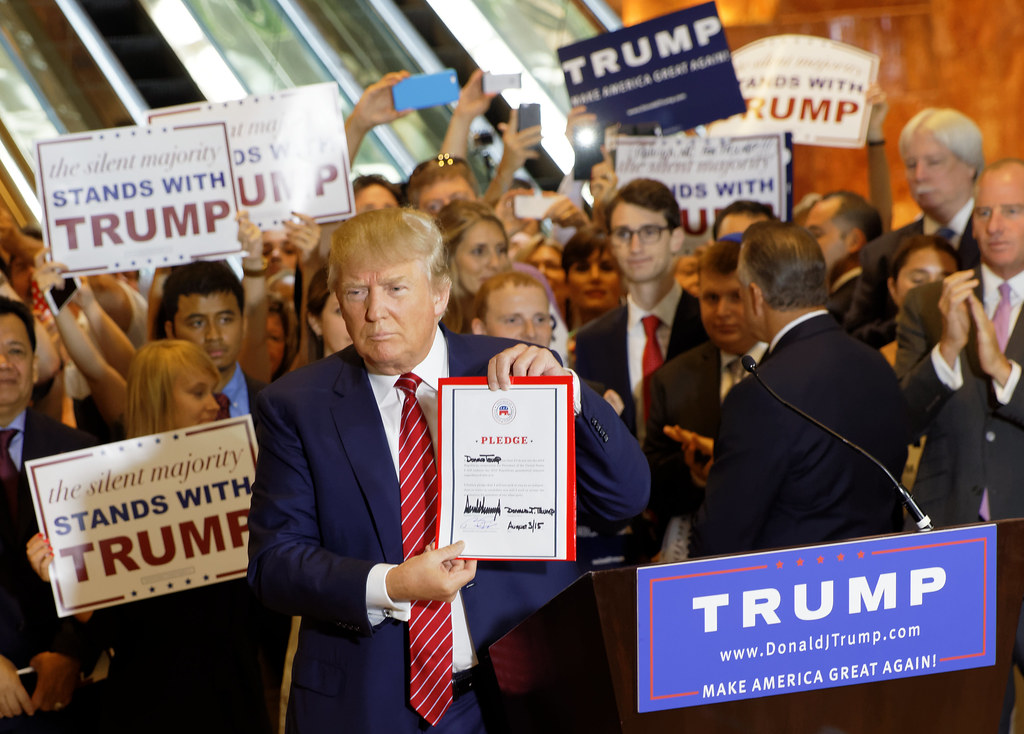
13. **The Second Presidency (Since 2025)**Donald Trump’s second presidency, commencing in 2025, quickly demonstrated a commitment to assertive policy shifts. Early actions included mass layoffs of federal workers, signaling an intent to dramatically restructure the federal bureaucracy. This move immediately generated significant discussion and opposition, setting a contentious tone.
Economically, the new administration promptly imposed tariffs on nearly all countries, marking a protectionist trade policy at levels unseen since the Great Depression. This widespread application of tariffs underscored a renewed commitment to reshaping global trade dynamics. Concurrently, he signed the ‘One Big Beautiful Bill Act,’ a legislative measure anticipated to have broad and significant implications.
His administration’s actions have quickly drawn over 300 lawsuits challenging their legality. These measures include the intimidation of political opponents, extensive deportations of immigrants, and targeted policies affecting transgender people. His broad interpretation of the unitary executive theory has led to significant conflicts with federal courts, where numerous actions have been deemed illegal or unconstitutional.
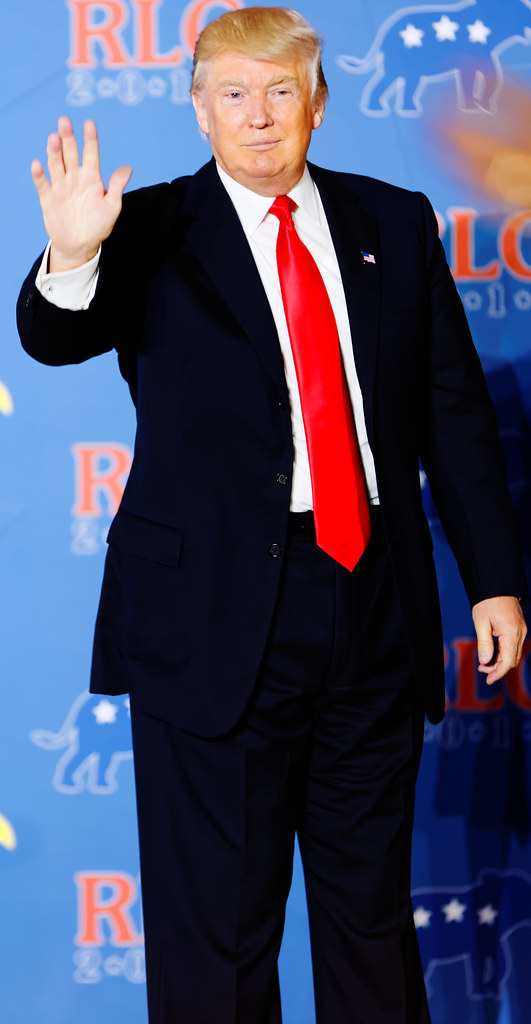
14. **The Enduring Legacy of ‘Trumpism’**Since 2015, ‘Trumpism’—Donald Trump’s unique leadership style and political agenda—has fundamentally reshaped the Republican Party and American politics. This phenomenon is characterized by an unconventional approach to public discourse, marked by direct communication, a populist appeal, and a challenge to established norms and institutions.
His public life and tenure have been marked by comments and actions frequently characterized as racist or misogynistic, sparking continuous debate regarding political conduct. He has also been noted for making false or misleading statements and promoting conspiracy theories to an unprecedented degree in American politics.
Critics have described Trump’s actions, particularly in his second term, as authoritarian and contributing to democratic backsliding. After his first term, scholars and historians ranked him as one of the worst presidents in American history. His enduring popularity among a significant electorate segment, however, underscores the complex, multifaceted nature of his influence.
Read more about: Charlie Kirk: An In-Depth Profile of the Right-Wing Activist and Trump Ally Who Died at 31
Donald J. Trump’s journey through American public life is undeniably one of relentless ambition, profound controversy, and unparalleled impact. From his early days as a real estate magnate leveraging a powerful personal brand to his multiple presidencies marked by bold policy shifts and continuous legal battles, he has consistently defied conventional expectations. His legacy, still unfolding and hotly debated, represents a seismic shift in the nation’s political identity and public discourse, leaving an indelible mark that will be dissected and discussed by historians and citizens for generations.

